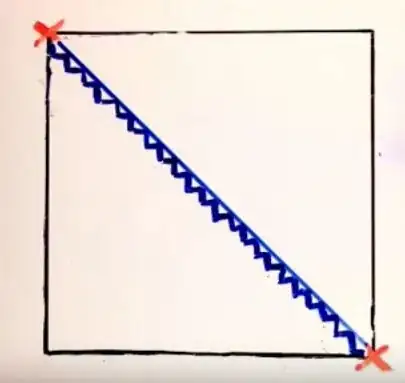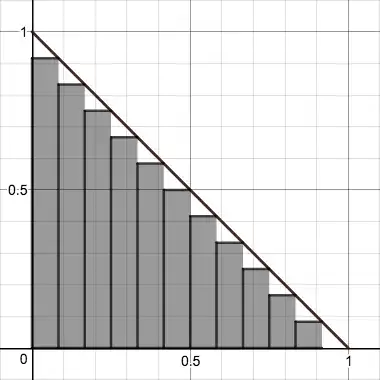Recently I've started my calculus classes and till now what I've seem to understood is that calculus is basically finding solutions by approximations on a microscopic level.
So if I have to find find the area covered by a circle, I would need to fit in many (~infinite) triangles (or rectangle) such that their edges appear to be matching with the circle. And now all I need to do is to sum the area of all these, infinite, triangles since we already know their area.
In the above example, we've just seem to approximated that their edges super impose with the circle's curve. If we still zoom in then most probably we could fit in more such triangles.
And this is where my confusion is, at some point, the answer won't be perfect. It would just be a very very close approximation to the actual area of circle. So, doesn't this mean that calculus is an inefficient way?
And oh btw, the above example is based on https://en.wikipedia.org/wiki/Method_of_exhaustion
Let me give another example. Consider a square of 1 unit. The shortest path to travel from one end to another would cover sqrt(2), using Pythagoras theorem. The longest way would be to go through the sides, which will be 2 units. But if we were to choose any other path except the diagonal and which also doesn't crosses itself neither goes back, then also the distance covered would be 2 units. Yes, any path, inside the square would also cover 2 units. Now, consider that you're going in zig zag manner and also very close to the diagonal. As shown in this picture. 
Now, make those zig-zag paths more small. So small that it finally appears to be a straight line, i.e. diagonal. Remember, it is still zig-zag on microscopic level. And over here we meet a paradox. Pythagoras says that its length is sqrt(2) however, choosing any path within square that doesn't crosses and neither goes back should provide the distance as 2 units.
This is something that I'm finding very hard to digest. Does this somewhat hints that calculus isn't the best way out there or maybe, calculus has its own flaw?
Thank you for putting in your efforts to answer this question.
